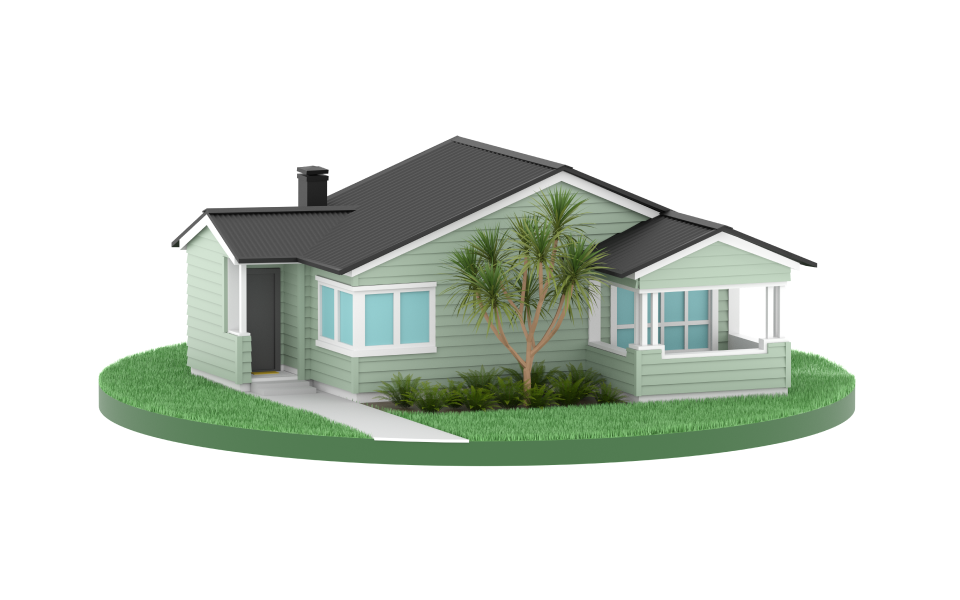All buildings in Āotearoa, from large-scale constructions to small home renovations, must comply with the Building Code - even if what you're doing doesn't require a building consent.
This means there are standards for important things such as the right levels of moisture, fire safety, overall health and safety, and energy efficiency.
However, given the environmental challenges we're all facing1 making further eco-friendly design and construction choices is a responsible option when you're thinking about a new or renovated home.
Benefits of an eco-friendly home
Unlike many Kiwi houses, which are known to be chilly, damp, drafty and unhealthy2, eco-driven homes offer modern comforts and are much better for our overall health.
And although it's usually more of an investment at the outset, long term it could save you (and our planet) exponentially with lower power and water bills over time2.
Imagine being toasty in winter and cool in summer, while saving on power and water bills. Your home will be healthier, and you'll also save money on operating costs2.
Of course, there are much wider benefits too. Sustainable builds have a much lower footprint on the climate, reduce waste, and are much less strain on the grid3.
For example, switching to renewable energy sources, such as solar, means less pollution. (Currently, around 80% of global energy and 66% of electrical generation are supplied from fossil fuels4).
Being more sustainable is great in theory, but where do you begin?
According to the New Zealand Green Building Council (NZGBC), here are some important starting points:
- Renewable materials
- Reducing waste and carbon impacts
- Designing for water and energy savings
- Adopting innovative technology.
Tips on sustainable renovation and eco-builds
Chat to eco-design experts
While you're designing, consider an assessment from an accredited eco-designer (this is council funded in some areas) who will come out and make recommendations for day-to-day energy-saving measures.
When you're dealing with architects, drafts people, builders or construction industry suppliers, share your expectations and see what they can contribute.
Get familiar with New Zealand's Homestar and Homefit standards, that encourage sustainable design standards.
Energy efficiency
A warm, dry house is a healthy home, so it is important to make sure you are choosing the appropriate and compliant insulation, heating, and ventilation options for you and your family.
Think about how you can get more sun into the house, particularly over winter. And for summer, consider how trees, fences or other shade might be placed.
For maximum natural light, make good use of windows and skylights, and consider double glazed glass and thermally broken joinery. More Kiwis are considering triple glazing and/or low emissivity glass. In the near future, new building standards may include new triple glazing standards in colder areas of New Zealand.
Consumer have a great information and advice guide on finding the right insulation for your home, to make it easier and cheaper to heat.
For internal finishes, use insulators such as curtains and eco-carpets.
These days you can also install great monitoring tools, showing real time performance of temperature, humidity, energy, solar generation, and even inside CO2 levels, via a sensor.
If you can't afford all the bells and whistles right now, future-proof as much as possible.
For example, install appropriate pipes so you could install solar hot water and hot water heating later. While solar is a really efficient option, it can be costly to install, so check whether it's right for your home5.
Consider the most energy efficient appliances (by checking energy ratings), plumbing fixtures (such as WELS star water efficiency ratings) and using LED lights.
Materials and reducing waste
When building, get your construction suppliers to consider reusing waste materials or recycling their waste. Salvaged materials can also be a great design option and add unique character.
Use products like eco-paints, eco-labelled carpets, FSC certified timber framing and permeable pavers.
Modern low-flow showers, toilets and grey water recycling are great options, as well as efficient storm water collection systems.
When it comes to outside spaces, think about in-ground worm farm composting and native plants.
Check out eco-building resources
When it comes to a greener build, there's no one-size-fits-all approach, but thankfully there are industry bodies, consultants and government sites that can help:
- NZ Green Building Council (NZGBC)
- Building Research Association of New Zealand (BRANZ)
- Eco Design Advisor
- Smarter Homes (Government site)
Consider your insurance cover
At Tower, we aim to help build a healthier, more sustainable future for us all. One initiative is providing a Sustainability Upgrade benefit option for you to purchase as an add-on to your House Policy. This means if your home suffers a total loss and is claimable under the policy, Tower will contribute an extra $15,000 above the sum insured so you can build back better by using more sustainable materials or features. Take a look at our House Insurance to learn more.
Doing the work to understand your options is highly recommended before you start a renovation or new build.
The many eco-friendly materials and technology out there may surprise you, especially in terms of long-term outcomes - for both you and our environment.
Sources
1UN 2021 Global Status Report for Buildings and Construction
2Revealed: The payback time on an eco-home
3Footprint: Business Sustainability - Episode 4: Construction
4Why are so many of NZ's homes unhealthy?
5Are solar panels right for your home?
Related blogs

Looking for house insurance?
Save $100 on eligible house insurance policies. Use promo code SAVE100. Ends 20 Sept 2025.*